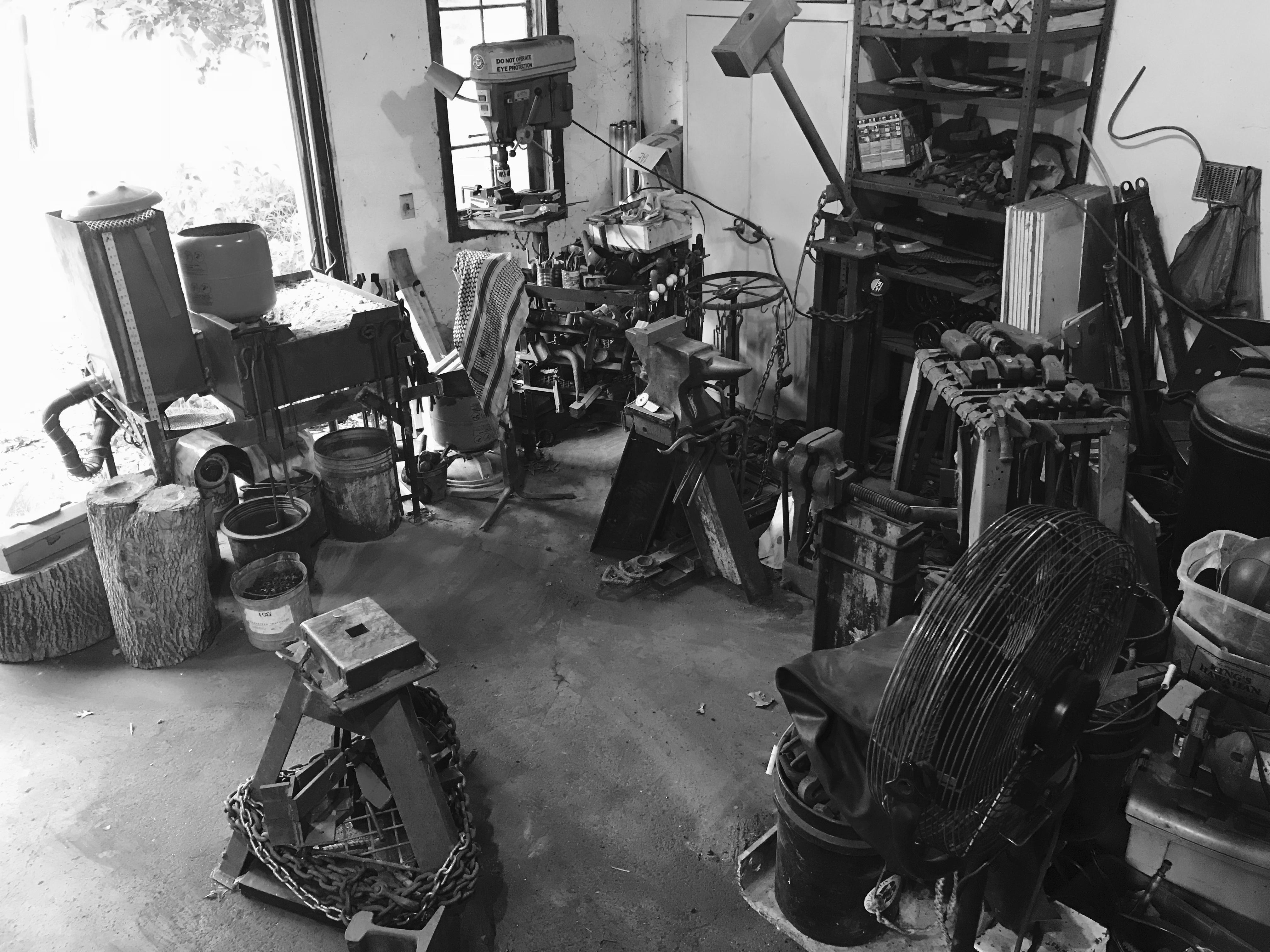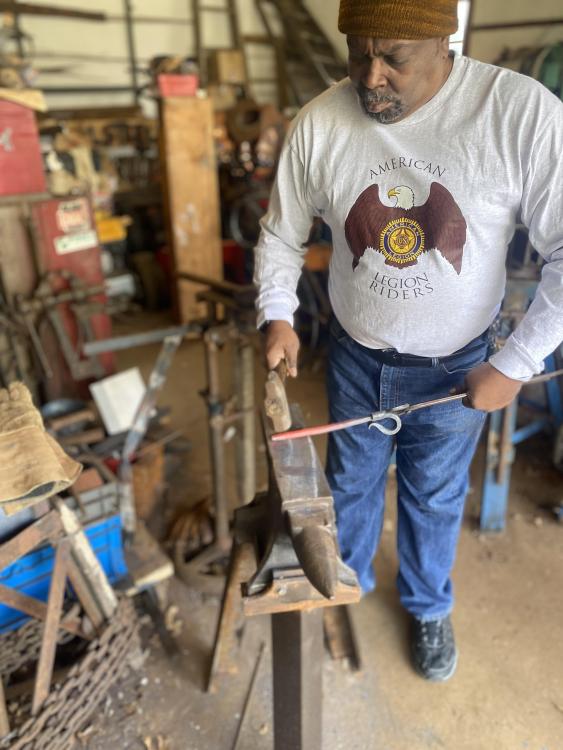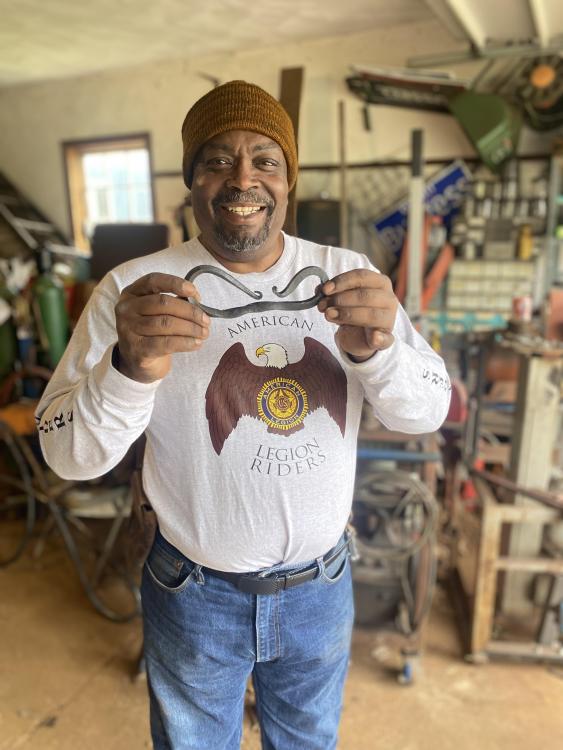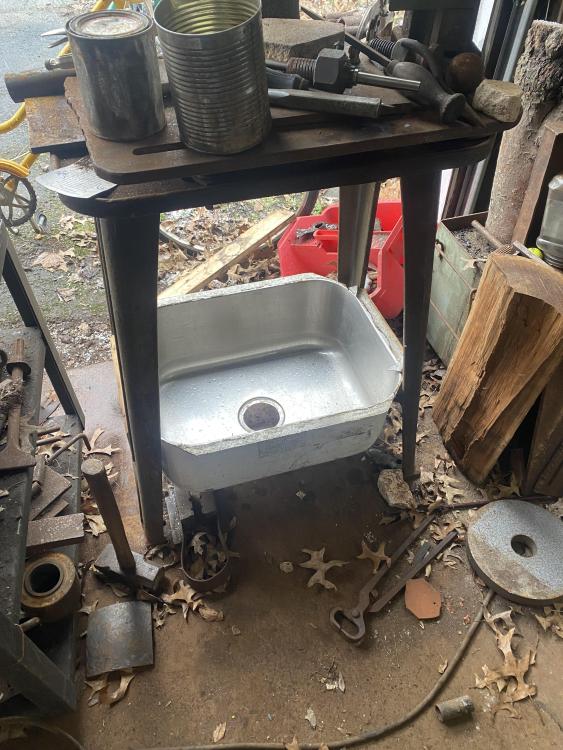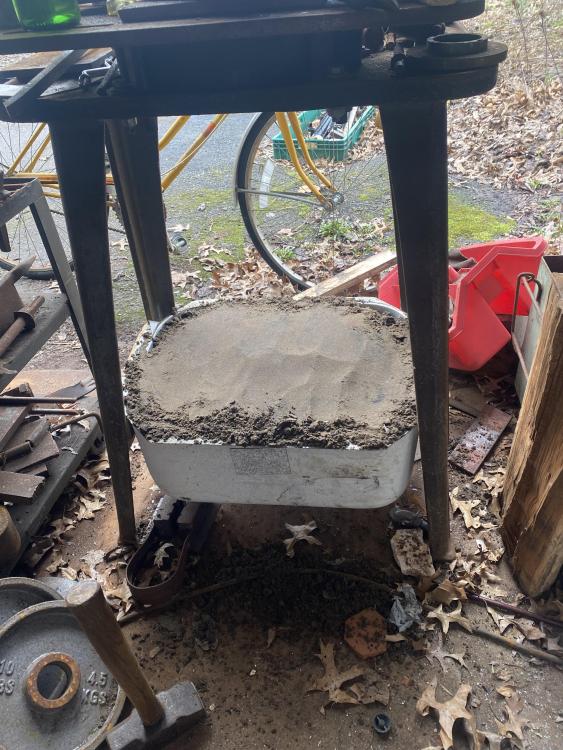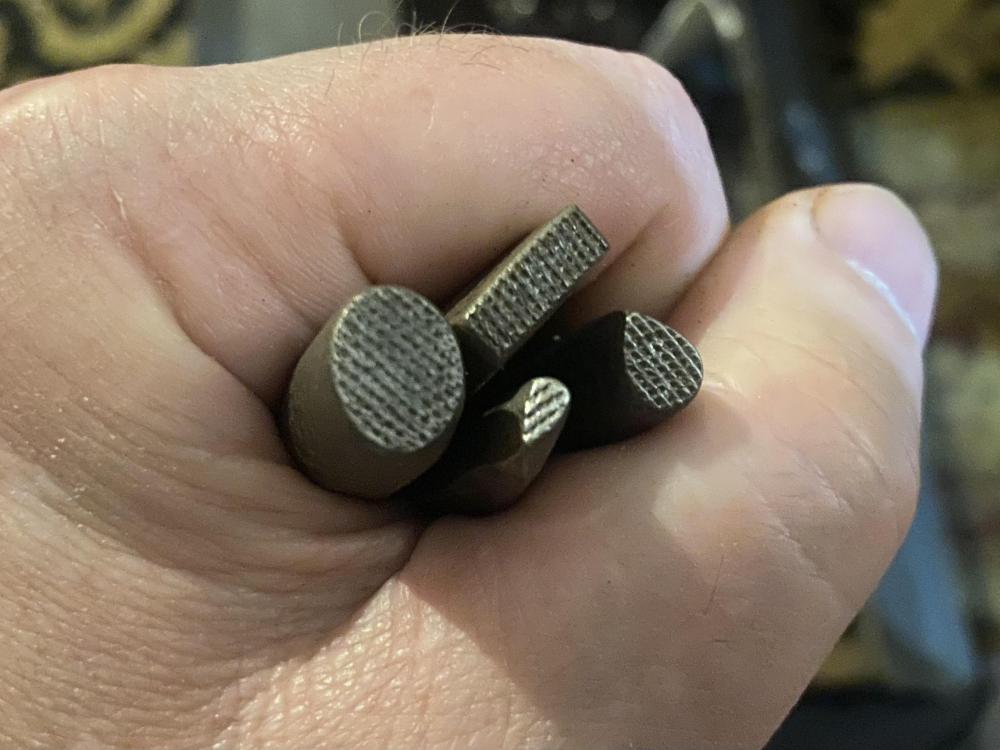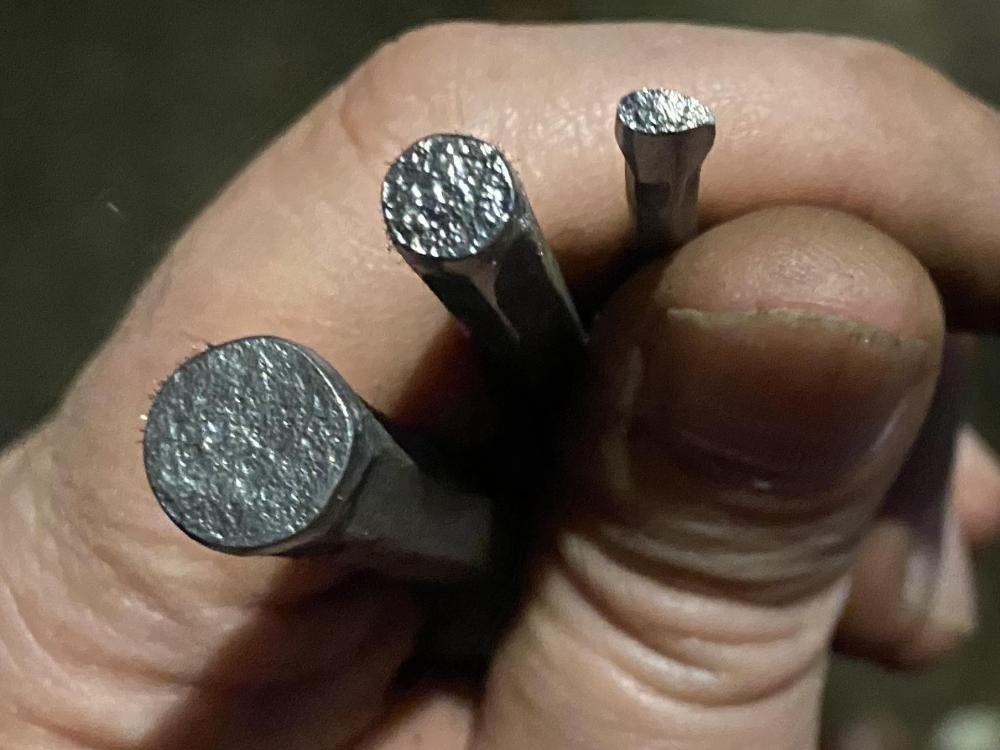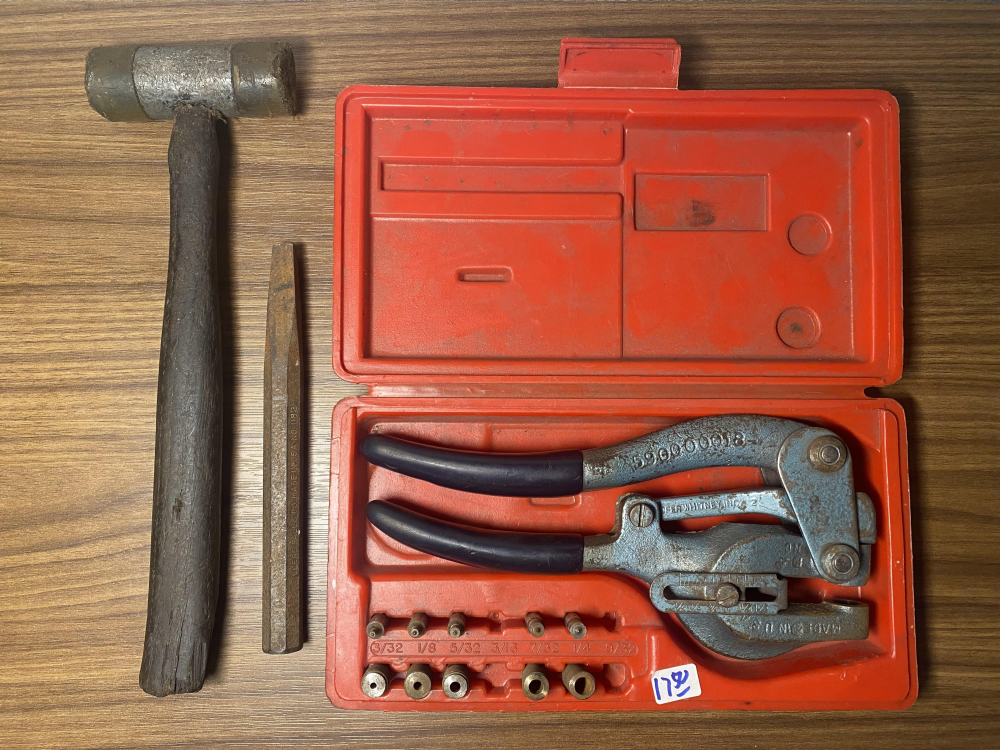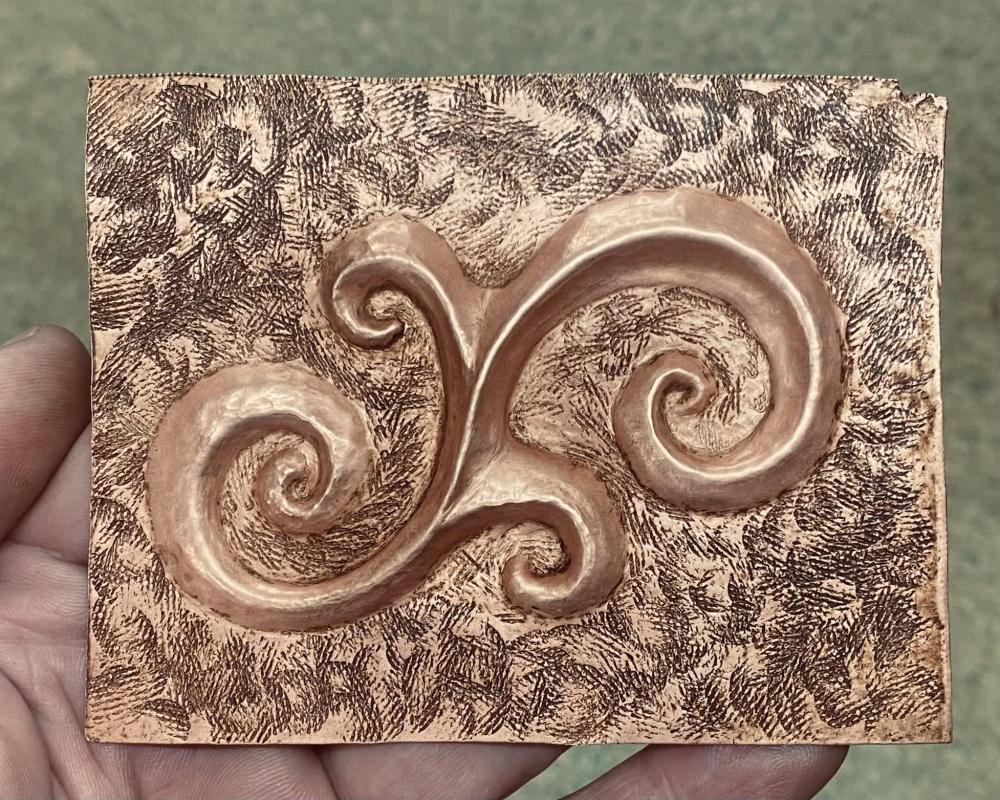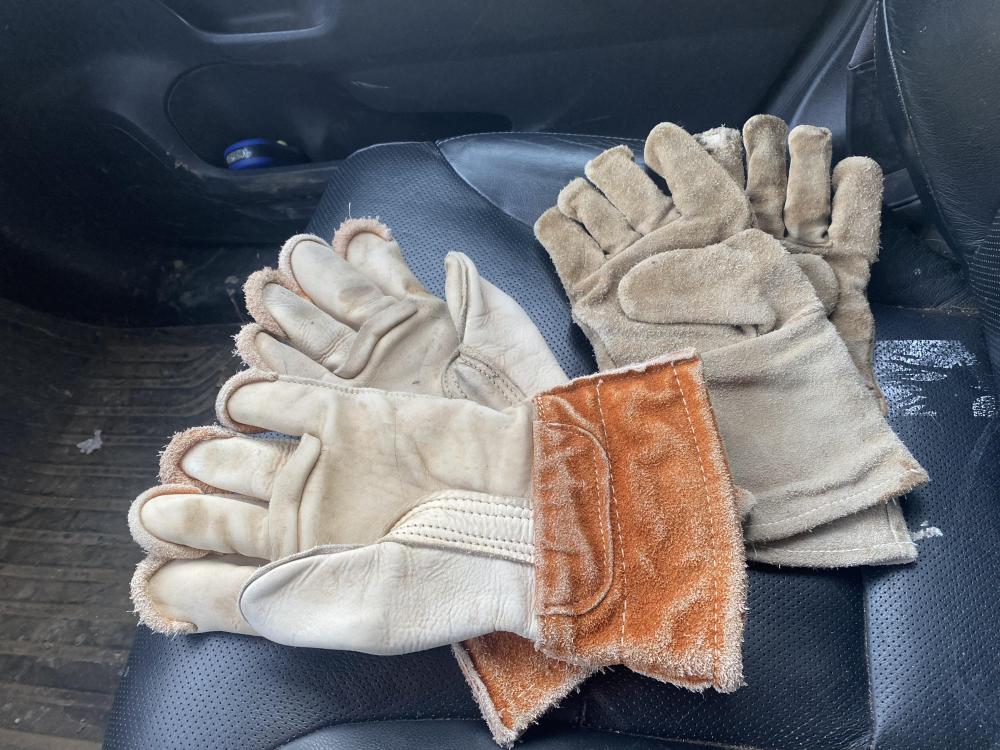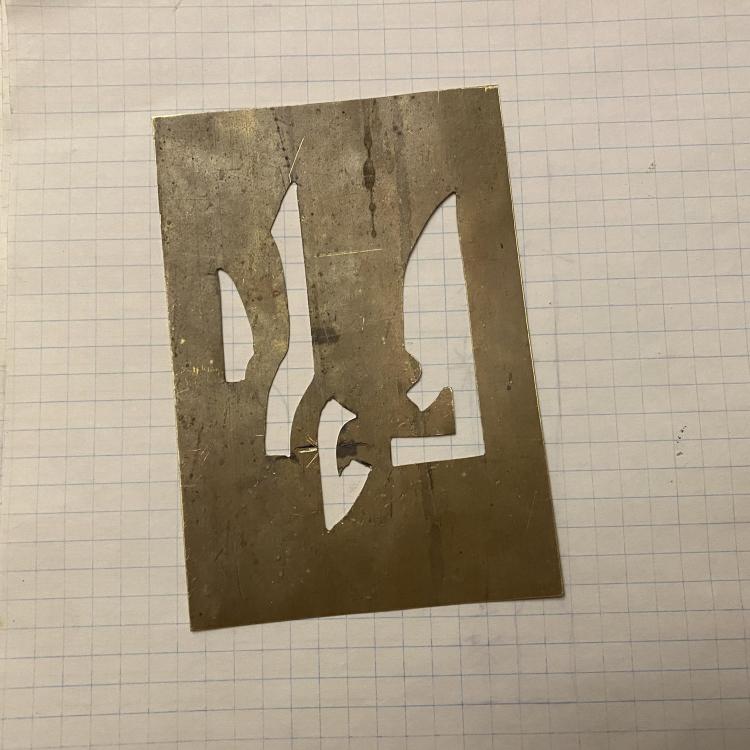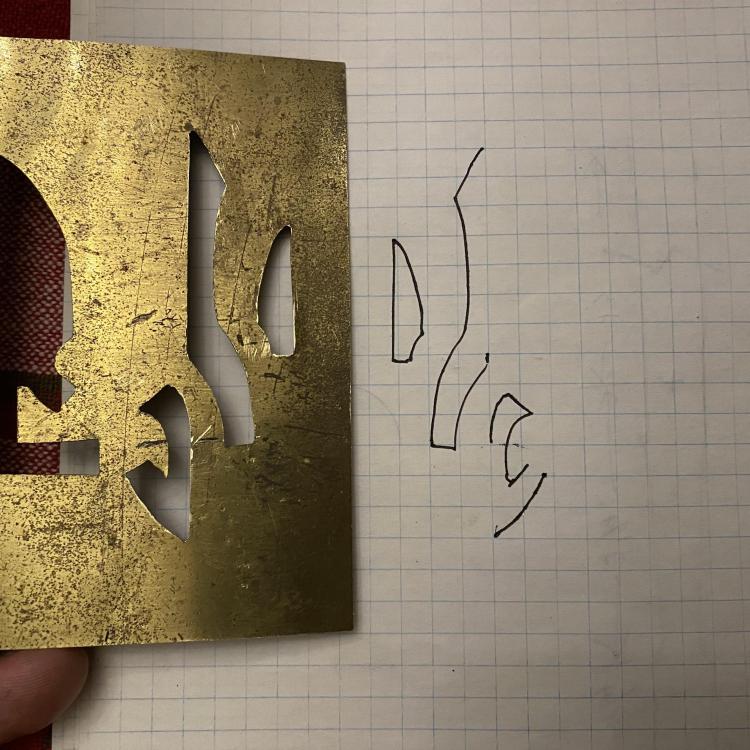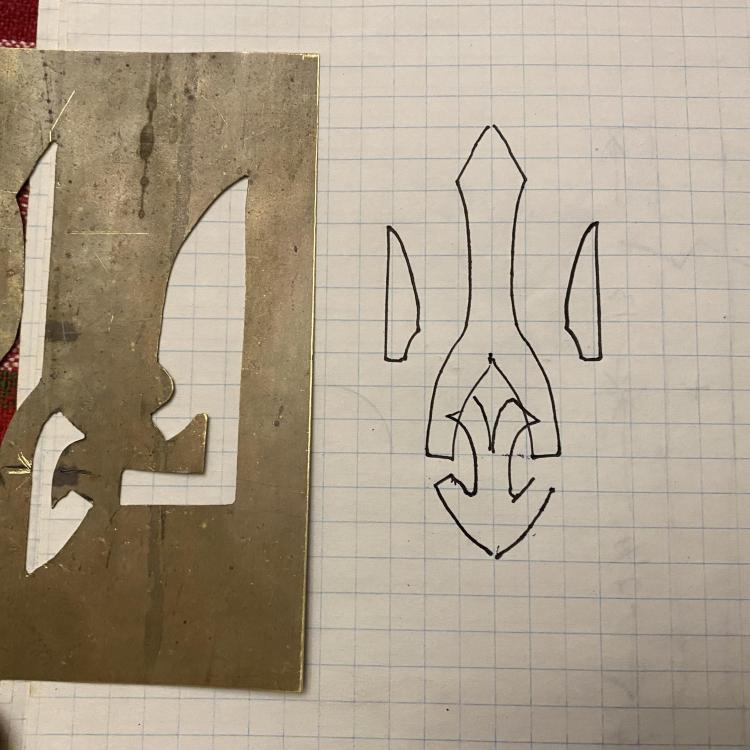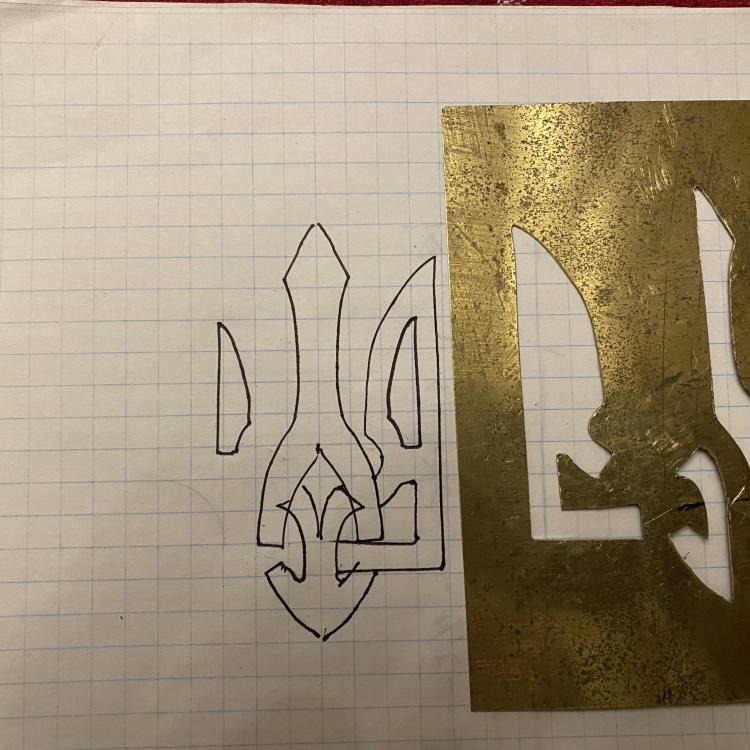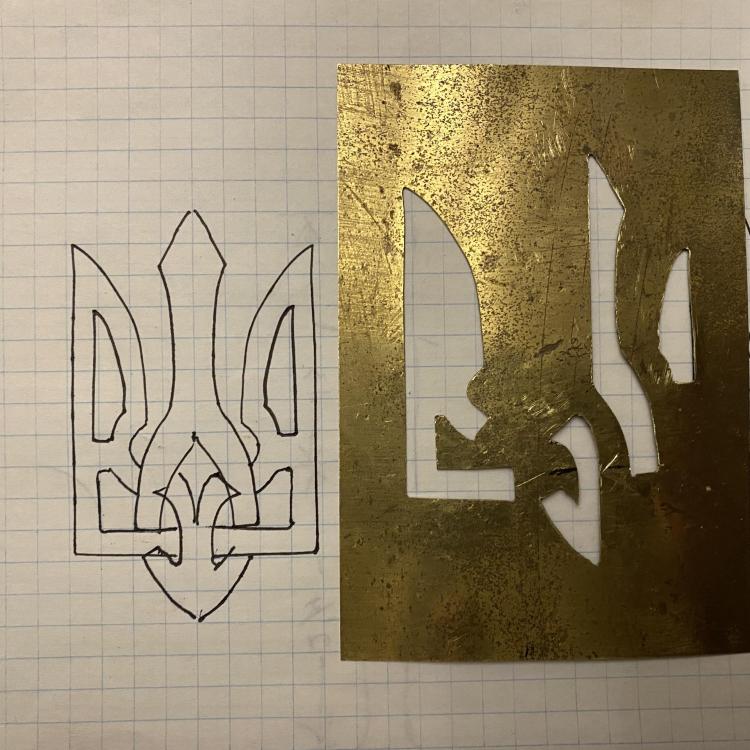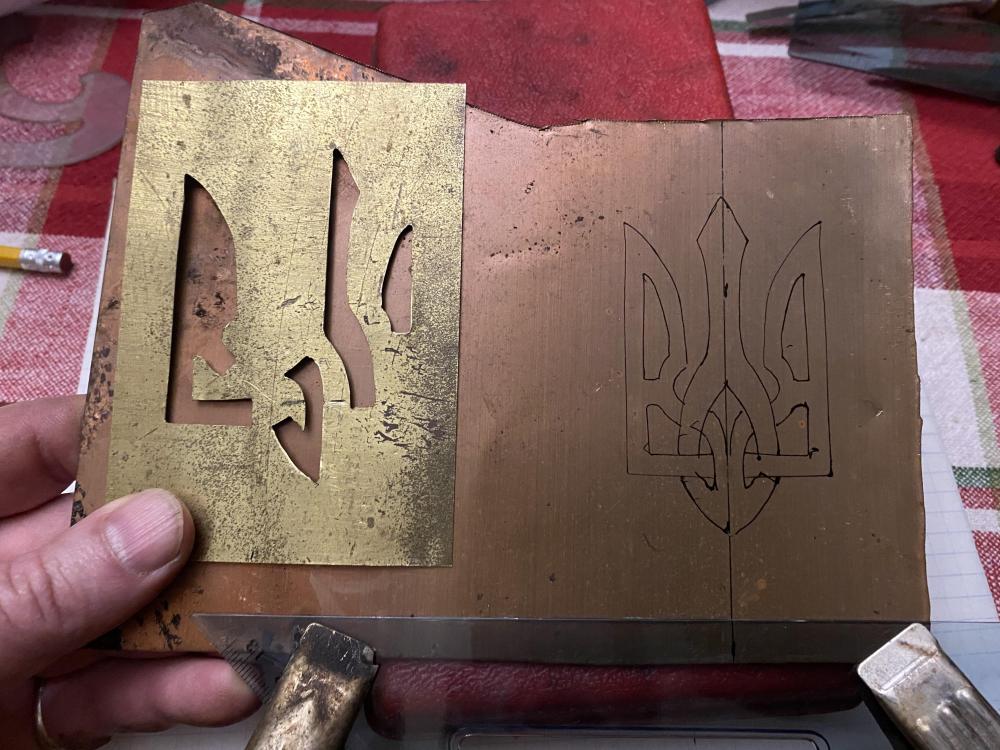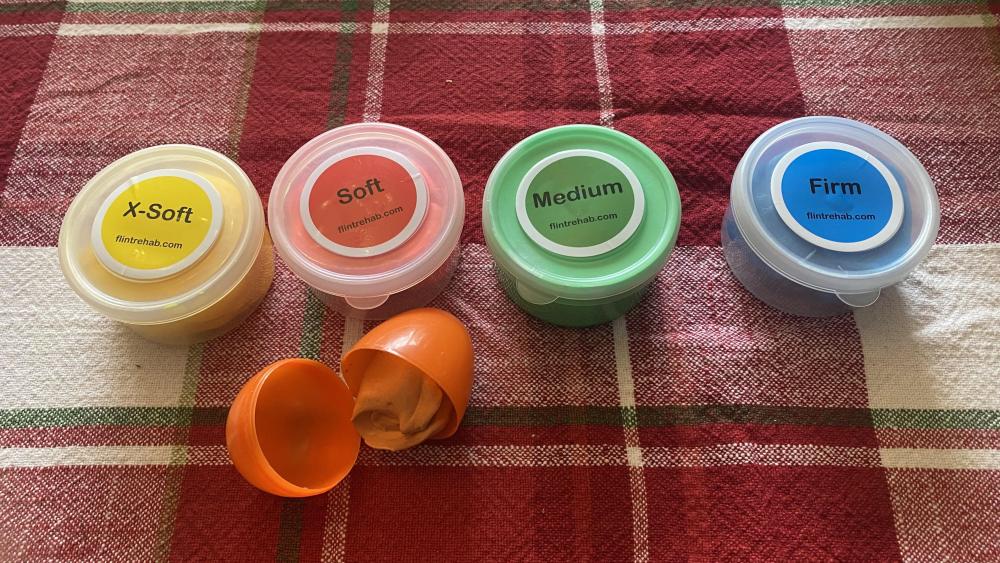-
Posts
19,292 -
Joined
-
Last visited
Content Type
Profiles
Forums
Articles
Gallery
Downloads
Events
Everything posted by JHCC
-

What did you do in the shop today?
JHCC replied to Mark Ling's topic in Blacksmithing, General Discussion
I’ll have to try the BB thing. So, two things today. First, the director of Safety and Security at the college came over to try out smithing and made a nice bottle opener. And I decided to try out an idea I’d had for stabilizing my fly press. This was to mount a stainless steel sink (donated by a friend who was remodeling their kitchen) under the stand and pack it full of sand. I haven’t done any significant forging with this yet, but it’s a lot more solid than it was before I’ll probably cover this with a shelf for tooling and such, but that’s for another time. -

JLP Blacksmith Teaching Center.
JHCC replied to jlpservicesinc's topic in Building, Designing a Shop
I read something many years ago about someone visiting a foundry and seeing an old man carefully polishing a bronze church door. After a while, he went up to him and said, “That door looks absolutely perfect. How do you know when it’s done?” The old man replied, “It’s never done. They just come and take it away.” -

What did you do in the shop today?
JHCC replied to Mark Ling's topic in Blacksmithing, General Discussion
I created the texture with tools made by heating the ends of some steel rods, hammering them against a file, grinding the outside to shape, and hardening & tempering. Here are a few others I made with the same process, although instead of hammering against a file, I hammered them against a rough spot on my shop floor. -
Anvil/vise combinations like this were made for one very simple purpose: to take advantage of the late 19th century mania for gadgetry in order to sell more tools. You are right; they don't make very good anvils, and I'm not even sure how good they are as vises.
-
I don't think so. Let's keep this thread as a separate discussion of your setup.
-

What did you do in the shop today?
JHCC replied to Mark Ling's topic in Blacksmithing, General Discussion
I can't find my jeweler's saw (I think it may be in my old woodworking toolbox in the basement, but I haven't actually used it in over thirty years), so I punched out most of the holes' area with my little Roper Whitney No. 5 Jr and then cleaned things up with a couple of files. I was greatly aided in making the straight sides by using the depth stop. Once that's set to punch holes a specific distance from the edge, all you have to do is punch a bunch of them side-by-side and then go over them again to punch out the bits in between. Punching overlapping holes wasn't a problem with this thickness of brass; certainly much easier than trying to make them with a twist drill. -
Yeah, I don't think there are many cannons in the Jane Austen canon. He discussed it here: At Fort Ticonderoga on the NY side of Lake Champlain, they used to do demonstrations of cannon and mortar fire (and still may, for all I know). They did a very good job of explaining how the big advantage of a mortar is that because it doesn't recoil nearly as much as a cannon, it can be dialed in with great accuracy to hit a precise spot. Their target was a steel box about 3' to a side, and if a mortar team managed to drop a ball in it, they would win a case of beer. For the cannon, they had a large steel target in the shape of a (significantly oversized) Hessian soldier, and the presenter would deliver the following spiel: "If the ball hits the target, you will hear a loud clang! If it is a near miss, a mound of dust will rise into the air! But if you hear no sound and see no mound, you know that ball is Vermont-bound!"
-

What did you do in the shop today?
JHCC replied to Mark Ling's topic in Blacksmithing, General Discussion
-
Here’s the thread detailing how I built mine: https://www.iforgeiron.com/topic/57590-helium-tank-super-sucker/ In answer to your question via message, my own flue was 10 inches/25cm in diameter and about 8 feet/2.5 meters long. Most of that was horizontal, but even so, it worked great.
-

Question about controlling spatter
JHCC replied to Buzzkill's topic in Welding/Fab General Discussion
Silicone can really interfere with painted finishes, as can some oils. If you use anti-spatter spray, check the label for what it says about cleanup and painting. -
It took a lot of washing and airing, but I managed to get it from "uncleaned dive bar" to "dead campfire".
-

Question about controlling spatter
JHCC replied to Buzzkill's topic in Welding/Fab General Discussion
Anti-spatter spray is definitely worth the investment, especially since it's not particularly expensive. Hairspray may be a lot cheaper, but any savings advantage is immediately lost in extra time spent on cleanup. -
Mink oil does have the advantage that I already have some. (I got it to condition the leather on the nearly new Red Wings I got on FBM a couple of weeks ago; the previous owner was a heavy smoker, and I had to do a lot of cleaning to reduce the cigarette smoke to a tolerable level.) I'll give it a try this evening.
-
Another FB Marketplace find: two pairs of welding gloves for $20. The leather of the pair on the left is a bit stiff. Anyone ever have any success with softening up welding gloves with mink oil or a similar leather conditioner?
-
That is true, but (like us) they do have tracheae. The difference is that they absorb oxygen through the surfaces of the tracheae, while ours serve to transport air to the lungs, where the oxygen is absorbed. The spiracles are the open ends of the tracheae.
-
No, the word for breathing apparatus is indeed "spiracle", from the Latin "spirare", to breathe. This is the same word from which we get "respiration". The technical term for insect hearing thingies varies according to the insect, as not all insects are capable of true hearing (although most are sensitive to vibration). In grasshoppers, for example, the term is "tympanal organ" or simply "tympanum", which is the Latin for "drum". Like the human tympanal membrane (the eardrum), this membrane (located on their knees) picks up vibrations from the air, converts them into nerve impulses, and send these to the brain.
-

What did you do in the shop today?
JHCC replied to Mark Ling's topic in Blacksmithing, General Discussion
Made a template for marking out tryzubi in preparation for repoussé. Not perfect, but a lot faster than tracing with carbon paper, especially since the original sketch is getting a bit fragile. -
I might handle it and try it out on some of the local sandstone. If nothing else, it’s a pretty tool.
-
In the upper right corner? That's the head of a quarry pick, used for cutting or carving stone. You can see a larger one being used in Mr. Chickadee's video of making a stone base for his anvil, starting at about the 8:05 mark.
-
The books were better. In particular, "The Mysterious Island" has an extensive description of the castaways smelting iron from ore they find on the island and then forging progressively more sophisticated tools.
-
eBay, a lot of the time.
-

Work-hardening a sickle question
JHCC replied to SubterraneanFireForge's topic in Cold Worked Iron and Steel
"I shed many tears before the thin moon rose up, frail and faint as a sickle of straw." -- Dorothy L. Sayers, The Nine Tailors -
Enjoy:
-
And this just arrived in the mail: four different densities of “therapy putty” (basically industrial strength Silly Putty) which I’ll be trying out as a pitch replacement in my Repoussé on the Road kit. (The Soft is about the same density as the SP in the egg, which works okay but sometimes feels a bit too soft.)
